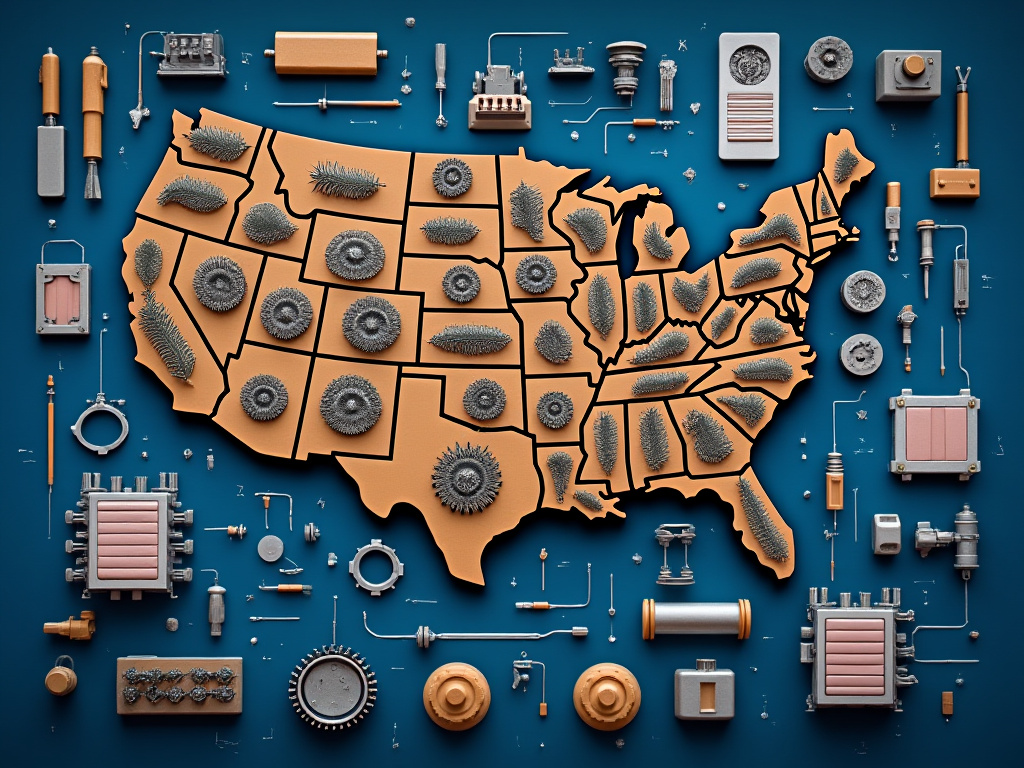In recent years, a significant shift has been observed in the global manufacturing landscape – the return of manufacturing jobs to the United States. This phenomenon, known as reshoring, is not just a temporary trend but a strategic move by companies recognizing the long-term benefits of domestic production. Here, we explore why this reshoring renaissance is taking place and the myriad advantages it brings to the U.S. economy, its workers, and the global market.
The Case for Reshoring
Economic Stability and Job Growth
One of the primary drivers behind reshoring is the quest for economic stability. Manufacturing jobs inherently provide stability due to their tangible nature – you can see, touch, and understand the direct output of labor. The resurgence of manufacturing in the U.S. means:
- Job Creation: For every manufacturing job created, there’s a multiplier effect, leading to additional jobs in related sectors like logistics, services, and supply chain management.
- Reduction in Unemployment: Bringing manufacturing back home directly addresses unemployment, providing a boost to local economies, particularly in regions where manufacturing was once the backbone.
Supply Chain Resilience
Recent global events have underscored the fragility of extended supply chains:
- Proximity to Market: Domestic manufacturing reduces lead times, allowing for quicker response to market demands and changes in consumer preferences.
- Risk Mitigation: By minimizing reliance on international supply chains, companies can better weather geopolitical tensions or global disruptions like pandemics or trade wars.
- Control Over Quality: Being closer to production facilities allows for better quality control, ensuring that products meet the high standards expected by American consumers.
Technological Advancement
The U.S. is at the forefront of technological innovation, particularly in automation and AI:
- Adoption of Cutting-Edge Technology: Reshoring facilitates the integration of advanced manufacturing technologies, which can lead to higher productivity and innovation in product development.
- Skills Development: There’s a growing demand for skilled labor in advanced manufacturing processes, driving education and training programs that can elevate the workforce’s capabilities.
Benefits Beyond Economics
Environmental Impact
- Reduced Carbon Footprint: Local production means less transportation, which significantly cuts down CO2 emissions.
- Sustainable Practices: U.S. factories often adhere to stricter environmental regulations, promoting sustainability in manufacturing processes.
Consumer Sentiment and Branding
- Made in USA Appeal: There’s a notable consumer preference for products labeled ‘Made in USA,’ which can command a premium in the market due to perceived quality and ethical production standards.
- Brand Loyalty: Companies that reshore can strengthen their brand by aligning with patriotic sentiments and showcasing investment in the domestic economy.
National Security
- Strategic Independence: Certain industries are critical for national security, and domestic manufacturing ensures that these capabilities remain within the country’s control.
Overcoming Challenges
While the benefits are clear, reshoring isn’t without its hurdles:
- Skill Gap: The transition requires addressing the current skills gap in the manufacturing sector through education and immigration policies that attract skilled workers.
- Cost Considerations: Initial costs might be higher due to labor and infrastructure investments, but these can be offset by long-term savings from efficiency and reduced logistics.
Success Stories and Future Outlook
Companies across various sectors are already seeing success with reshoring:
- Automobile Industry: Giants like Tesla are investing in U.S. production, leveraging automation and domestic market access.
- Electronics and Semiconductors: The push towards self-sufficiency in critical tech components has led to significant investments in domestic semiconductor manufacturing.
The future looks promising for reshoring. The U.S. government’s initiatives, like tax incentives and policies promoting domestic production, along with public-private partnerships, are setting the stage for a robust manufacturing comeback.
Conclusion
The reshoring of manufacturing jobs to the USA isn’t merely about returning to old practices; it’s about innovating the future of manufacturing. It encompasses economic, strategic, and environmental benefits that promise a more resilient, self-sufficient, and innovative America. As companies continue to recognize the advantages of domestic production, the trend towards reshoring is expected to gain momentum, fostering a new era of American manufacturing prowess. This movement not only revitalizes local economies but also redefines global trade dynamics, emphasizing quality, speed, and sustainability over mere cost reduction.

